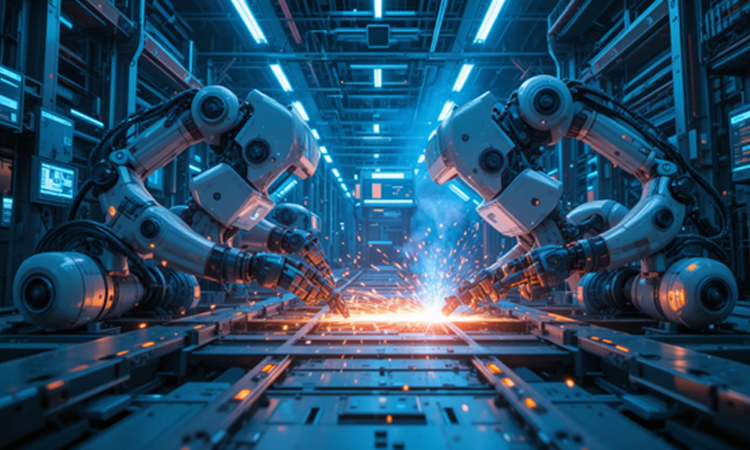Welding Automation 2.0: Welding has always been the backbone of industrial progress. Every bridge, railway coach, automobile frame, heavy machine and structural assembly depends on the quality, precision and consistency of welded joints. But over the last few years, welding has moved far beyond being a purely manual skill. It has become one of the most technologically disruptive pillars of modern manufacturing driven by automation, robotics, smart materials and digital intelligence.
As India strengthens its position as a global manufacturing hub, Welding Automation is emerging not just as a trend but as an essential capability. Companies across automotive, railways, construction machinery, heavy fabrication and engineering are rethinking how they weld, how they train people and how they integrate automation into their production lines.
A sector growing faster than ever
Studies from Markets&Markets and the Indian Welding Society indicate that the global welding equipment and automation market is expanding rapidly, and India is among the most promising growth territories. The demand for higher output, internationally consistent quality, and reduced manufacturing costs is pushing industries to look beyond conventional welding practices.
What makes India unique is the combination of rising industrial output, an evolving export ecosystem and an urgent need for skilled welders. Estimates from NSDC suggest that India will require nearly a million additional welding professionals in the coming years many of whom will operate in hybrid environments combining manual skills with advanced automation. This changing landscape is fueling investments in robotic welding, material innovation and process optimization.
Robotic welding becomes mainstream
While Robotic Welding was once concentrated in high-volume automotive plants, the technology has now found its way into mid-sized engineering units, fabrication shops and even first-time automation adopters. The shift is driven by the need for consistent quality, predictable cycle times and the ability to handle complex geometries with precision.
New-age robotic systems have become significantly more accessible. Intuitive programming interfaces, teaching-by-guiding capabilities and simplified deployment models allow even semi-skilled operators to work with advanced equipment. The result is a more empowered workforce and faster transition from manual to automated welding—something Indian manufacturers have long aspired to achieve.
Next-generation processes redefining performance
The welding industry is also witnessing the arrival of next-generation processes that push the boundaries of speed, quality and material compatibility. Multi-wire arc systems, high-efficiency power sources and synchronized arc technologies are enabling exceptional deposition rates while reducing heat input and rework.
These innovations have tangible impact across high-strength structures, railway components, heavy fabrication, and precision assemblies. By minimizing the number of layers required in thick-section welding, reducing intermediate cleaning and maintaining seam accuracy, manufacturers achieve higher productivity without compromising on quality.
At the same time, application-driven demands especially in sectors like food equipment, renewable energy systems and construction machinery have accelerated the adoption of advanced alloys, sensor-based monitoring and real-time arc control. Welding is no longer a one-size-fits-all operation; it is increasingly engineered to suit the exact material and structural demands of each project.
Bridging the Skill Gap: Technology + Training
A critical part of India’s welding transformation lies in capacity-building. With industries transitioning toward automation, the need for knowledgeable welders and technicians has never been greater. Skill development initiatives, hands-on demonstration centres, and collaborative training programs are helping bridge this gap.
More importantly, newer welding technologies themselves are designed to simplify operator effort. Systems that reduce programming complexity, automate parameter settings and provide guided workflows are making high-quality welding accessible to a much broader segment of the workforce. This combination of intuitive technology and industry-led training is shaping a new generation of welders who are future-ready and confident in their ability to work with advanced automation.
The Road Ahead: Intelligent Welding for Intelligent Manufacturing
The future of welding belongs to companies and professionals who embrace intelligence, agility and innovation. As manufacturing shifts towards higher precision and lower tolerance for errors, welding processes must evolve at the same pace. The next chapter of industrial growth will be defined by intelligent welding cells, hybrid man–machine collaboration, high-performance arc systems, and automation that blends craftsmanship with machine accuracy.
Welding is no longer merely a production activity—it is a strategic advantage. The businesses that invest in modern welding technologies today will be the ones shaping India’s manufacturing success story tomorrow.
For in-depth insights, expert perspectives and a detailed industry outlook, read the full cover story in our upcoming edition of Machine Tools World.

